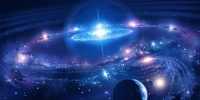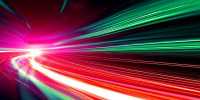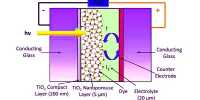The temperature of a superconducting particle accelerator was lowered to barely two degrees above absolute zero (-456 degrees Fahrenheit). Its superconductivity comes in at this point, allowing it to deliver high-energy electrons with nearly little energy loss. The improved Linac Coherent Light Source (LCLS) X-ray free-electron laser will be used to probe chemical processes in great detail, capturing images of atoms and molecules at the action in exceedingly short timeframes.
To distinguish it from its predecessor, the laser is referred to as LCSL-II. It will generate 10,000 times brighter pulses at a rate of up to one million times per second. For the same electricity price, that’s 10,000 times more pulses than the original LCSL. “LCLS-II will create more X-ray pulses in just a few hours than the existing laser has generated in its entire lifespan,” LCLS director Mike Dunne said in a statement.
“Data that used to take months to gather may now be created in minutes. It will advance X-ray science to the next level, allowing for a wide range of new investigations and improving our potential to develop transformative solutions to address some of society’s most pressing problems.” The cooling procedure needs to be done extremely slowly to avoid damaging the components. On April 15, the incredible temperature – which is lower than the temperature in outer space – was finally reached.
LCSL-II was ready for its first operation on May 10, according to the announcement. “The LCLS-II project took years of effort from big teams of technicians, engineers, and scientists from five different DOE laboratories across the United States, as well as many colleagues from across the world,” said Norbert Holtkamp, SLAC deputy director, and LCLS-II project director. “Without these continuous connections, as well as the knowledge and devotion of our collaborators, we would not have gotten to where we are now.”
The LCLS-II facility will soon refine our understanding of how nature operates on ultrasmall, ultrafast scales, with implications ranging from quantum electronics to clean energy. A half-mile-long tunnel 30 feet below in Menlo Park, California, is currently colder than the rest of the cosmos. It houses a new superconducting particle accelerator as part of a project to enhance the Department of Energy’s SLAC National Accelerator Laboratory’s Linac Coherent Light Source (LCLS) X-ray free-electron laser.
Crews successfully cooled the accelerator to minus 456 degrees Fahrenheit, or 2 kelvins, a temperature at which it becomes superconducting and can push electrons to high energies with almost little energy loss. It’s one of the final steps before LCLS-II produces X-ray pulses that are 10,000 times brighter than those produced by LCLS on average and arrive at a million times per second – a world record for today’s most powerful X-ray light sources.
















